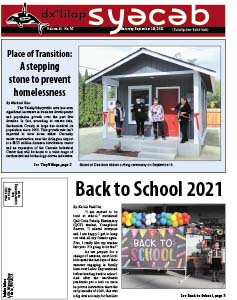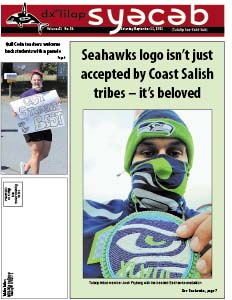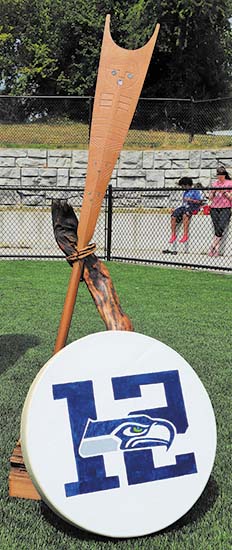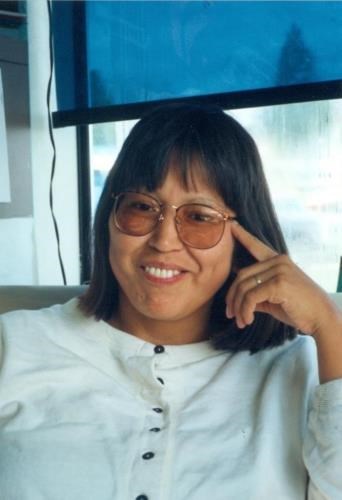
Author: Kim Kalliber
Over $350,000 raised for Tulalip Boys & Girls Club
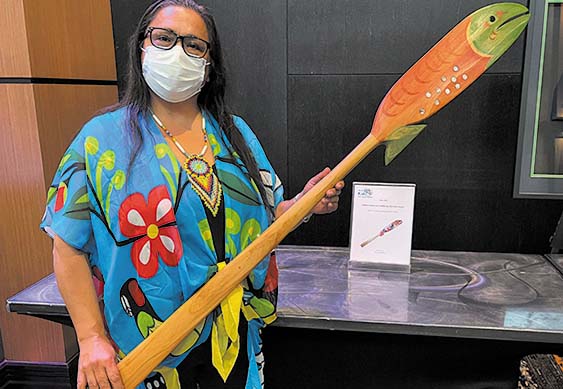
By Micheal Rios, Tulalip News
During the mass uncertainty of 2020, the annual auction to benefit our Tulalip Boys & Girls Club was forced to the digital landscape. An all-virtual setup was deemed necessary at the time, but proceeds collected were not up to usual auction standards. As a result, event coordinators were determined to see the return of an in-person auction at the Tulalip Resort’s orca ballroom. Months of planning led to a truly memorable evening, highlighted by a tangible spirit of generosity.
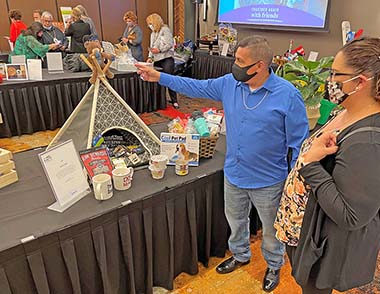
Dubbed ‘Together Again with Friends’, the 23rd annual Tulalip Boys & Girls Club auction occurred in elegant fashion with nearly 500 guests creating widespread enthusiasm while bidding on a number of one-of-a-kind items, tribal artwork, vacation packages, and sports memorabilia. The fundraising filled evening was all about giving donors and community partners an opportunity to take action for the benefit of local youth, while supporting the Tribe’s reservation based Boys and Girls Club.
“This evening’s auction was our largest fundraising event of the year. Your generous donations helped us achieve our goal to fund vital programs and services that improve the lives of youth in the Tulalip area,” stated Matt Monty, auction committee chairman. “[We’re] charged with deepening our impact on the young people we serve. These fundamental elements drive all of our efforts to have a lasting impact on youth.”
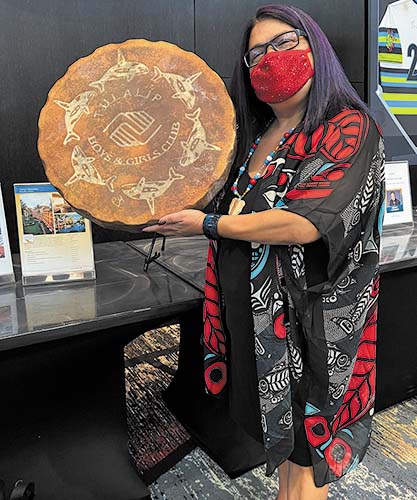
‘The Club’, as it’s affectionately been nicknamed by hundreds of regularly attending children, is a safe place where kids can just be kids. While there, children are routinely exposed to healthy food choices, create an abundance of happy memories, and make relationships that last a lifetime.
The Club is the first of its kind to be built on tribal land in Washington State. Established in 1995, 2021 marks twenty-six years of commitment to the community. Through before and after school programs, it aims to help young people improve their lives by building self-esteem, developing values, and teaching skills during critical periods of growth.
Serving as a model for those working to improve the lives of young people in the surrounding communities, the Club is the primary beneficiary of the annual fundraising auction. With each auction building off the success of previous years, the Club has not only been able to sustain services, but to complete much needed campus expansions that add additional learning and activity space.
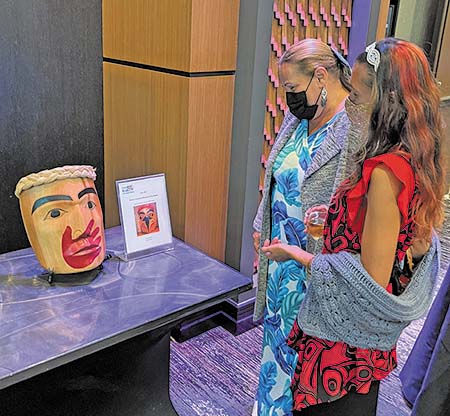
Funds raised from the annual actions are dedicated for capital improvement, not operating costs. Previous auction funds have paid for a state-of-the-art music studio, a multi-media room with twenty-plus computers, several transportation vehicles, roof repairs, upgraded kitchen equipment, and most recently a 4,000-square-footextension to better accommodate an ever-growing teenager membership. This teen center became invaluable during the past 18-months. In such a tumultuous time, local teenagers were able to depend on access to the tech-driven teen center to meet their social developing needs.
“It’s so funny looking back because I didn’t realize how much the Club meant to me as a kid, but really it was everything,” said Boys and Girls Club Director, Shawn Sanchey. The Tulalip tribal member has come full circle after he himself grew up a Club kid and now manages the same facility so many kids depend on every day. “It’s amazing being able to witness these kids learn and grow in the same way staff once did for me. Some of my earliest memories are of Grandma Diane offering guidance in her own special way. And two decades later, she’s still here and still knows the name of every kid who comes in routinely. It really is unique how dedicated people are to the youth in our community. It goes hand-in-hand with our mission to let our kids know we care about them and we care about their future.”
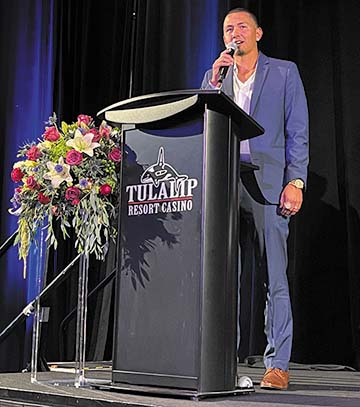
Of the 491 generous individuals who attended this year’s fundraising event, most have never been to Tulalip’s Boys & Girls Club, yet their passion for making a difference for our kids is heartfelt. The uplifting faces of Club kids ever-present on table centerpieces and projected onto screens bordering the ballroom, and those teenagers who volunteered to work the auction and help generate support by sharing their stories only aided in deepening the connection with auction attendees.
Shortly after the auction ended, event coordinators shared some delightful fundraising numbers. Exactly $51,500 was raised for Kids Kafé, which is an essential part of the Club’s services. Kids Kafé addresses the very basic fact that often the meals provided to club members are the most nutritious part of their daily diet. An impressive stat worth knowing is Kids Kafé served 6,400 meals per week and a whopping 230,400 meals over the past year.
In total, over $350,000 was raised between the silent and live auctions, including the enormous amount of support for Kids Kafé. There were so many generous contributors who played a critical role in making the 23rd annual auction possible.
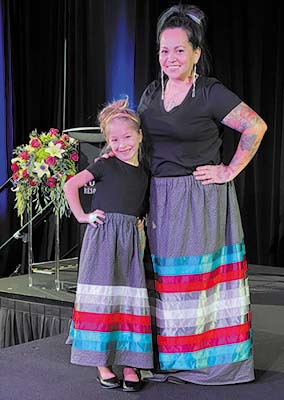
“The auction is really about building relationships with the community and continuing to build upon the strong foundation of support we have with the Tulalip Tribes, Snohomish County, and Tulalip Resort Casino,” explained Terry Freeman, assistant director of development for the Boys & Girls Clubs of Snohomish County. “For twenty plus years now, our goal has remained the same – to create more and more partnerships off the reservation to achieve our goals on reservation. Thanks to our collaborative leadership teams, we continue to meet and exceed this goal.”
Thanks in large part to everyone who contributed and gave generously, the 23rd annual action was a major success. The generosity and heartfelt support received each year from sponsors and volunteers is overwhelming. As in years past, the funds raised from the auction will ensure Tulalip’s Club continues to provide and improve upon quality programs in a fun, safe and positive environment for our kids.
September 18, 2021 syəcəb
Place of Transition: A stepping stone to prevent homelessness
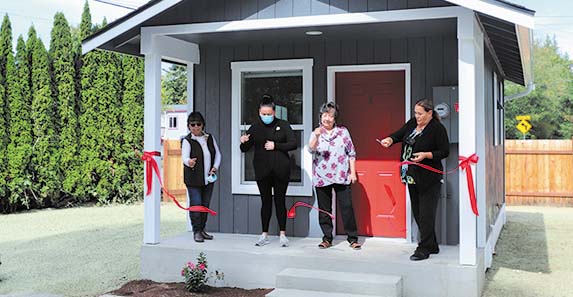
By Micheal Rios, Tulalip News
The Tulalip/Marysville area has seen significant increases in business development and population growth over the past few decades. In fact, according to census data, Snohomish County at large has doubled its population since 1990. This growth rate isn’t expected to slow down either. Currently under construction near the Arlington airport is a $355 million Amazon distribution center and an expansion of the Cascade Industrial Center that will be home to a wide range of mechanized and technology-driven industries.
What comes hand-in-hand with such growth booms is a dramatic rise in both the cost to own a home and the cost of rentals. A quick Google search of the local housing market and you may be shocked at the results. The average price tag to buy a house is nearly $500,000, while average rent for a three-bedroom apartment is north of $1,800 a month. These figures aren’t what a typical Tulalip head of household would call ‘affordable’.
Combine these costly housing figures with the super slim pickings of rentals and houses to buy on the Tulalip Reservation, and it means catastrophe for some. In this context, the catastrophe is homelessness. For a family with children, their worst nightmare. For an individual Tulalip citizen, a possible breaking point with no escape in sight.
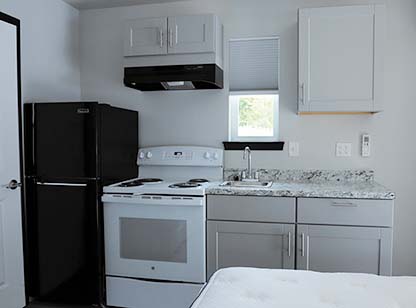
Tulalip Tribes leadership intends to offer a solution in the form of transitional units to its membership who are currently homeless or in imminent risk of becoming homeless.
“Transition units is an idea we had because we recognize a high level of homelessness that we are experiencing in Tulalip, and we wanted to make sure we had additional resources available,” explained Chief Operating Officer Wendy Fryberg. “We really want to focus on what ‘transition’ means for our members. We understand this comes at all levels of life experience, incomes, and ages. Having these transition units is a starting point for someone to have a place to wash their clothes, cook a meal, take a hot shower, and simply have a roof over their head.

“Transition unit clients will be connected with a life coach who will assist in developing and working through a plan to achieve necessary goals for long-term, permanent housing,” she continued. “This site is a stepping stone for our membership designed to prevent homelessness. The name Place of Transition recognizes this setup as a temporary living arrangement with possible transition to the Tribe’s homeless shelter, future tiny homes coming next year, or the ultimate goal being transitioning to permanent housing.”
Back in early May, tribal council broke ground on the transitional living site. In the process they began a long requested service that will benefit Tulalip’s ever-growing membership. It’s been four months since that ground breaking and the first of several planned sites intended to prevent homelessness is now complete.

Back in early May, tribal council broke ground on the transitional living site. In the process they began a long requested service that will benefit Tulalip’s ever-growing membership. It’s been four months since that ground breaking and the first of several planned sites intended to prevent homelessness is now complete.
Located across the street from Tulalip Bay fire department, the inaugural site consists of five units that are fully furnished. Essential amenities include a bath tub with shower, kitchenette and stackable washer/dryer. The living space is compact (240 square feet), yet the sense of stability for those who will occupy each transitional unit is immeasurable.
Rent will be $300 per month to cover the water, sewer and Public Utility District (PUD) costs. Each unit will provide crucial comforts like electricity, temperature controlled heating and cooling, and connections for internet access.
Tulalip’s committed construction team put in all necessary work for what is sure to be a game changer in the community. Adding another layer of meaning, many of the hands involved in the construction were Tulalip tribal members who graduated from the Tribe’s vocational training center.
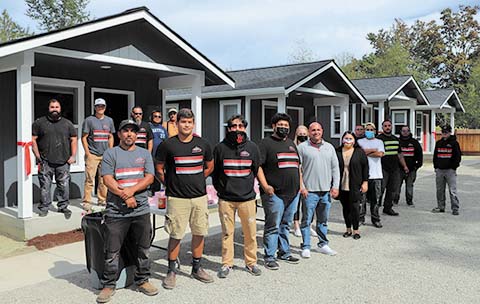
“I’m proud of my team and everyone we were able to bring onto this project. We really proved ourselves by staying within our budget and completing the construction quicker than many thought possible,” said interim construction director Stephen Quimby. “A lot of young tribal members out of the TERO program were able to gain much needed experience and be a part of something that’s going to bring hope to those who need it most.”
After seeing the finished units in person, Tulalip leadership was thoroughly impressed and commended the construction team for a job well done. Planning and development for a future second site is already underway.
For potential transition unit clients:
Applications are now available online at www.tulaliptribes-nsn.gov/Dept/Housing or from the CSR desk at the Admin Building. Submit application to transitionunits@tulaliptribes-nsn.gov or the CSR desk. Eligibility is outlined on the Housing website in the 2021 Transition Unit Procedures.
.
COVID-19 Case Update, Sept. 15
Seattle Mariners celebrate Indigenous People
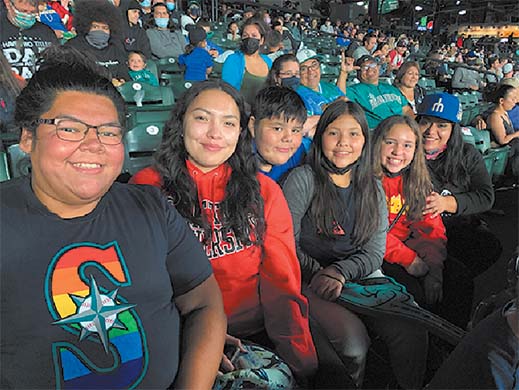
By Shaelyn Hood, Tulalip News
On Monday, September 13, 2021, the Seattle Mariners hosted their 18thannual Native American Heritage Night. The first 5,000 fans received a t-shirt by Chris Duenas that featured the Mariners “S” logo with Coast Salish motifs and the message, “We honor our ancestors”.
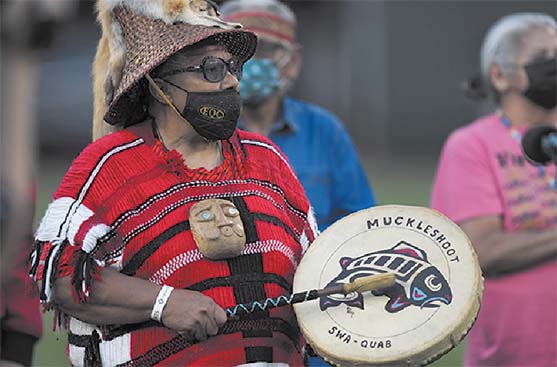
The night started off with a performance by members of the Puyallup tribe with a traditional song, drum, and dance. Throughout the night, fans enjoyed viewing a hand carved, 30-foot tribal canoe and a gallery of 40 works of art by local tribal artists.
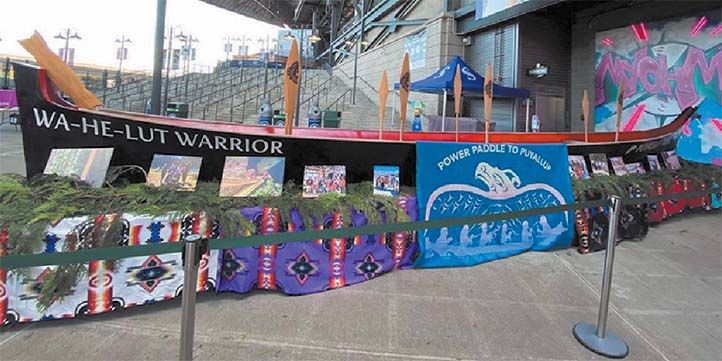
During the game, the Mariners honored Dr. Alan Shelton, a Puyallup tribe medical director, as a Hometown Hero, for advocating health and safety practices during the pandemic. The Mariners recognize members of the Pacific Northwest community at each game for their part in helping others to overcome the pandemic.
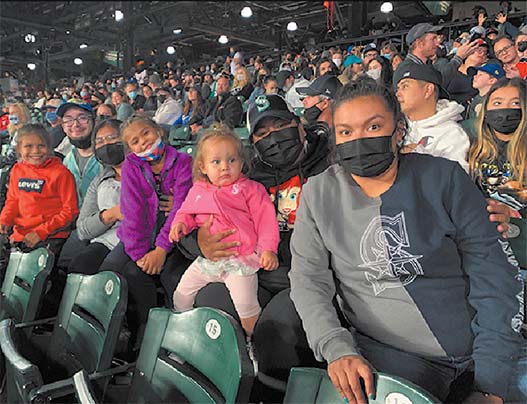
Barbara Hatch, Diana Aguilar, and Alex Havel.
If you wish to nominate someone who has stepped up to help others during this time, nominations are accepted through September 30, 2021 at www.mlb.com/mariners/fans/hometown-heroes.
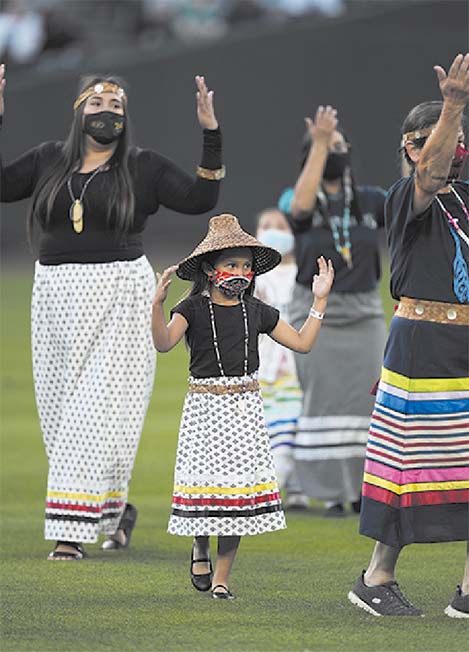
September 11, 2021 syəcəb
Seahawks logo isn’t just accepted by Coast Salish tribes – it’s beloved
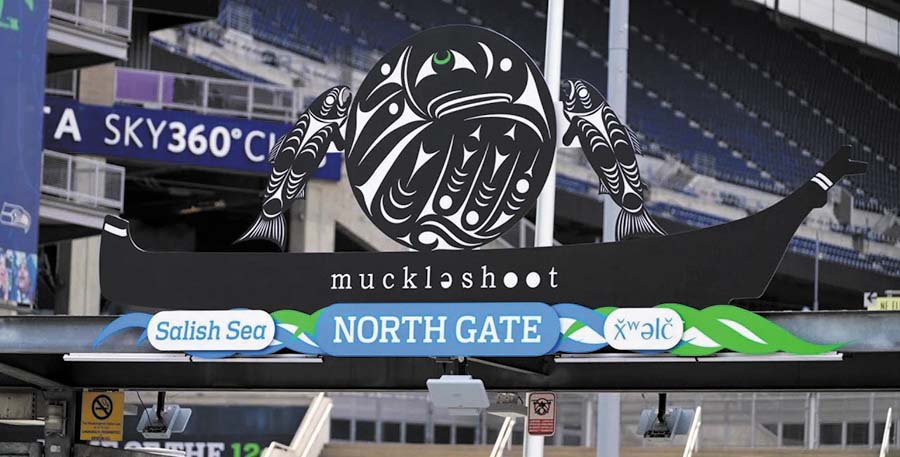
By Micheal Rios, Tulalip News
There is no such thing as a seahawk. This may come as a surprise to some Seattle football fans who, while tuned into this weekend’s 2021 NFL Kickoff, may be unaware of the origin of their home team’s logo. Some might even assume that, as an appropriated Indigenous design, it falls under the banner of problematic logos, like those of a handful of other sports franchises, such as the Cleveland Indians or the Kansas City Chiefs.
But unlike those teams, whose logos are founded on stereotypes (as opposed to any specific aspect of one of Native America’s 574 federally recognized tribes) the Seattle Seahawks’ logo is that rarest of birds: a culturally accurate sports icon directly inspired from an Indigenous masterpiece — and embraced by the Indigenous People it is borrowed from.
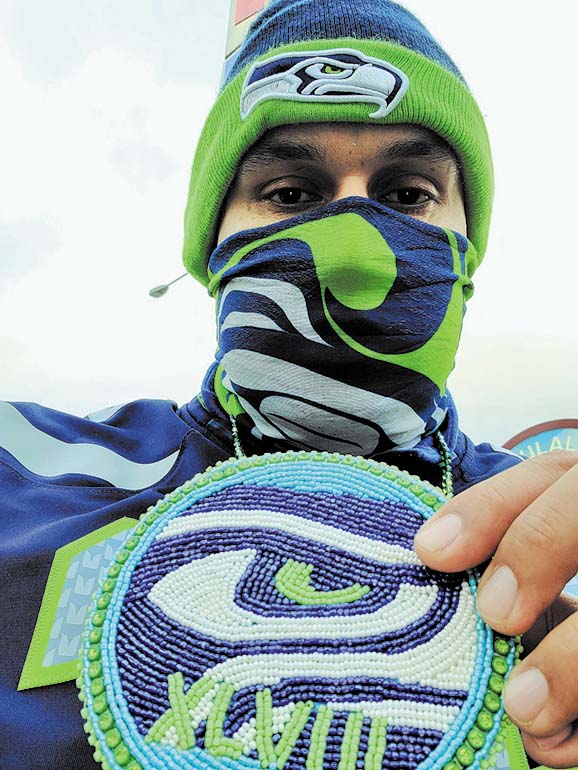
Anatomy of a logo
Ornithology experts theorize the term seahawk refers to a combination of an osprey, which is a bird of prey native to coastal North America, and a skua, which, in the Pacific Northwest, we normally call a seagull. So if there isn’t an actual “seahawk” found in nature, then where did the inspiration for the Seattle Seahawks’ logo come from?
The general consensus is that in 1976 the NFL commissioned a logo for the newly formed Seattle football team. Then-General Manager Ted Thompson wanted the Seahawks’ logo to reflect “Northwest Indian culture.” He and his team of concept designers must have been Native culture enthusiasts who stumbled across a truly remarkable piece of Indigenous Northwest Coastal art. That artwork in question was a Kwakwaka’wakw (pronounced: KWA-kwuh-kyuh-wakw), a transformation mask from northeastern Vancouver Island.
In September 2014, the Burke Museum, located on the University of Washington campus, learned of the mask’s whereabouts and launched an online fundraising campaign to bring it back to the Northwest Coast. It didn’t take long to raise the money needed to conserve, insure and ship the mask across the country. Within weeks of arrival the hidden history of the mask was unveiled and the origin story of the Seahawks logo went public.
While the details behind the origin story of the Seahawks’ logo remained a mystery for decades, what has always been certain is its positive celebration by local Coast Salish tribes. All along the Salish Sea, tribal people have embraced the Seahawks logo and re-appropriated it into our culture.
“Great things inspire imitations. In the same way that so many Native people and white people and Asians are inspired by hip-hop, an art form created by Black people, many people are inspired by our beautiful art,” said attorney and Seattle resident Gyasi Ross (Blackfeet). “Native people have some beautiful artwork, and of course it inspires people to want a piece of it. The Seahawks logo is a perfect example of that. And we love it.
“But also, the Seahawks are actually active and respectful of the huge Native community here in the Pacific Northwest,” he added. “From speaking at graduations to speaking out against the [Washington] Redskins mascot, the Seahawks have a great relationship with the Native community here, both urban and Reservation-based.”
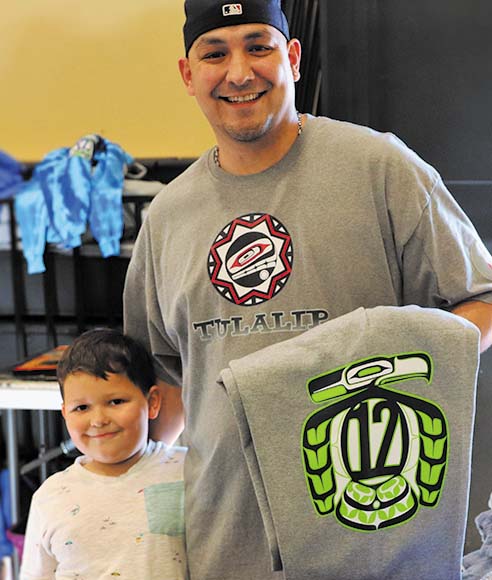
A team that uplifts
Their commitment to Native communities is what distinguishes the Seahawks from so many other organizations that claim to honor Native culture with their logos and mascots, yet contribute little or nothing to their local tribes. The Seahawks have a history of making significant impact to the Tulalip Tribes in particular.
Back in 2008, Seahawk Bobby Engram collaborated with Home Depot, the Kaboom! Program, and Boys & Girls Clubs of Snohomish County to build a 50-by-50-foot playground at the reservation’s ‘Club.’ In 2014, following a shooting at the Marysville-Pilchuck High School, the Seahawks hosted tribal member Nate Hatch, who was shot and survived, along with his family at CenturyLink Field (now Lumen Field), where they received the VIP treatment from players and coaching staff.
Then in June 2019, Seattle Seahawks legend Michael Bennett hosted a once-in-a-lifetime football camp for Tulalip community youth. Nearly 250 participants ages 7 to 18 had an opportunity to catch a pass from and do drills with the Super Bowl champion. Afterwards, Bennett stuck around to sign autographs and take photos with every single one of his adoring fans. Most recently, in October 2019, former Seahawks Cooper Helfet and Jermaine Kearse landed a seaplane right in Tulalip Bay before spending an afternoon with 30 Tulalip youth.
A history of positive impact. Countless moments to uplift Tulalip youth and inspire them to always dream big. Promoting healthy lifestyle choices and physical fitness as a means of self-discipline to achieve long-term goals. The reciprocal nature of Seahawk respect and appreciation for local tribes and the proud Native fandom they’ve received in return continues to manifest itself in truly imaginative ways.
For starters, it’s common to see the Seahawks’ logo reimagined via Coast Salish designs in all possible mediums. Native artisans have reproduced it as blankets, clothing, beaded jewelry, eye-capturing medallions, wooden panels, furniture, flags, face masks and even six-foot-tall chainsaw carvings that celebrate the Seahawks’ Native roots. These items and more can routinely be found at powwows, all-Native basketball tournaments and other Native vendor-friendly events around the region.
“The Seahawks have given back to our community in so many ways and really made a difference in the lives of our youth,” shared lifelong fan and Tulalip tribal member Josh Fryberg, whose family of eight buys new Seahawks jerseys representing their favorite players every year. “As for the connection between the Seahawks and Coast Salish art, the roots definitely run deep. For my family, we have a lot of Seahawks-themed artwork created by very talented Native artists, both from Tulalip and other tribes. More than the art though, the Seahawks mean family togetherness. Every Blue Friday we rock our jerseys and every game day we gather as a family to cheer on our Seahawks.”
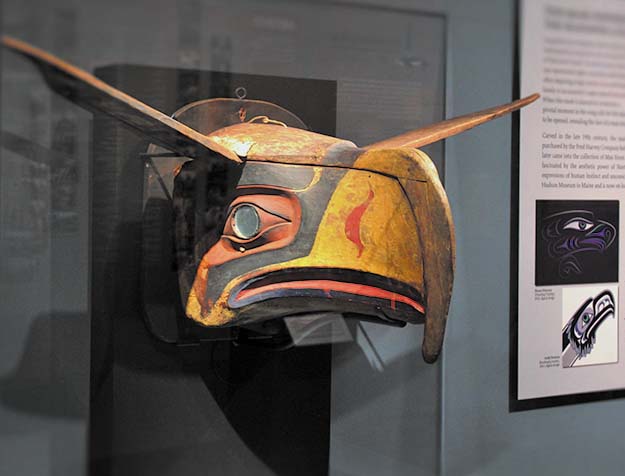
The unique partnership between the Seahawks organization and Coast Salish tribes who comprise part of the devout 12th Man fan base takes on a new, awe-inspiring form outside of Lumen Field. Dubbed “Muckleshoot Plaza”, the field’s north entrances have been adorned by Indigenous artwork. Featuring a massive seahawk, two salmon, a traditional dugout canoe and written Lushootseed, the impossible to miss architecture designed by Muckleshoot artists serve to remind all who pass by that they are guests on Coast Salish land.
“This artwork will not only inspire our communities, but also educate them on the important history of the Native Americans in this region,” said Chuck Arnold, President of the Seattle Seahawks. “We look forward to a long and meaningful partnership for many years to come.”
Whether the Seattle Seahawks make it to this year’s Super Bowl or not, in the hearts and minds of thousands of Coast Salish tribal members, they will always be champions. Not because of a Vince Lombardi Trophy, but because our football team respects their local Native communities off the field — where it matters most.
Virtual Family Night: Providing education about gambling addiction and building strong support systems
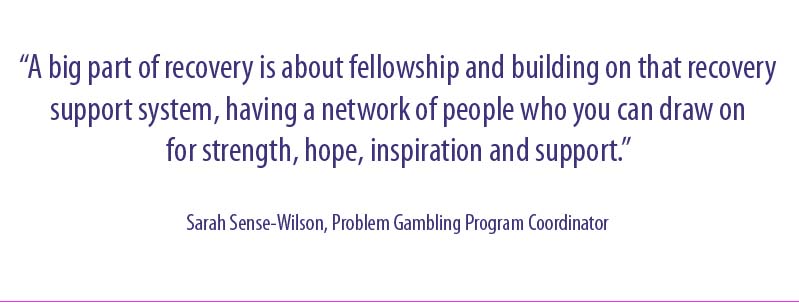
By Kalvin Valdillez, Tulalip News
“During recovery, it’s really important that your family has an understanding of the addiction, because if you’re not an addict, you just won’t understand it,” said Tulalip Problem Gambling Counselor, Robin Johnson “Especially gambling. Gambling is hugely overlooked as being an addiction, so the family is left thinking, why? Why can’t you just pull yourself up, why can’t you quit, it doesn’t make any sense to them.”
The Tulalip Problem Gambling Program is inviting you to their upcoming virtual event that will take place on September 30, from 5:00 p.m. to 6:30 p.m. Known as Family Night, the monthly event is more than just a social gathering for recovering addicts and their families, but a support group where both friends and family members of recovering excessive gamblers can get a better understanding of the addiction.
Recovery can be a strenuous journey full of ups and downs as well as milestones and setbacks. Families are often affected throughout the process and also carry the burden of the addiction as well, whether that’s financially, emotionally, mentally, physically or all of the above. The Family Night support group is an opportunity for family and friends to learn about the many tribulations they could face while helping their loved ones on the road to recovery, while also getting insight to what fuels the addiction and how they can help end an often-vicious cycle of trying to hit it big.
The monthly gathering also features guest speakers on occasion, providing recovering addicts and members from groups such as gambler’s anonymous and al-anon a space to share their story, to help serve as inspiration to those in recovery and provide any helpful tips or suggestions to family members, friends and compulsive gamblers alike, as they’re in the same journey together. And if you’ve ever attended a Problem Gambling event in the past, then you already know that it is sure to be an entertaining evening with fun and educational activities and plenty of good-medicine-laughs to go ‘round.
As a people, Native Americans are at the highest risk of developing a gambling habit. According to a 2019 study conducted by the National Institute on Alcohol and Related Conditions, 2.3% of the entire Indigenous population are battling gambling addiction, one of the highest percentages in the nation. Sarah Sense-Wilson, the Problem Gambling Program Coordinator, predicts those numbers will be on the rise because of COVID-19. Due to restrictions and stay-at-home orders, the amount of online gambling and sports betting is projected to be much higher than usual over the past two years.
Sarah shared, “There’s been a lot more relapse and people gambling. Whether that’s online gambling or gaming or other forms of gambling, there has been an increase since COVID and it’s been harder for people to really grab ahold of recovery.”
For this reason, it is important that those individuals, who are attempting to escape the grips of excessive gambling, have a strong support group of people they can rely on when the going gets tough. Family Night is the perfect opportunity for recovering gambling addicts to start and build that support system.
“A big part of recovery is about fellowship and building on that recovery support system, having a network of people who you can draw on for strength, hope, inspiration and support,” Sarah expressed. “There’s still a lot of stigma around this particular addiction. Gambling disorder is a disease, it is an addiction. There’s still huge denial throughout Indian Country and mainstream as well. We’re still way far behind in accepting, acknowledging and supporting people to get help. It’s a hidden illness.”
If you wish to be member of this monthly support group, to better understand the disease and learn how you can assist someone during their recovery journey, all you have to do is RSVP with the Problem Gambling program at (360) 716-4304. And on the day of the event, Thursday September 30 at 5:00 p.m., simply enter this Zoom ID number: 313 507 8314 on either the Zoom app or at www.Zoom.us Family Nights are held once a month on every third Thursday.
“Family Nights are really important,” Robin stated. “Because it’s not just as easy as sending your person to treatment and they fix them there and send them back home. The education is a requirement that we have for our clients, that one of their family members or friends attends Family Night during their treatment to gain an understanding. Family Night is about education and gaining information about gambling addiction. We always offer resources, so that beyond us, they have a resource list that they can go to and access.”
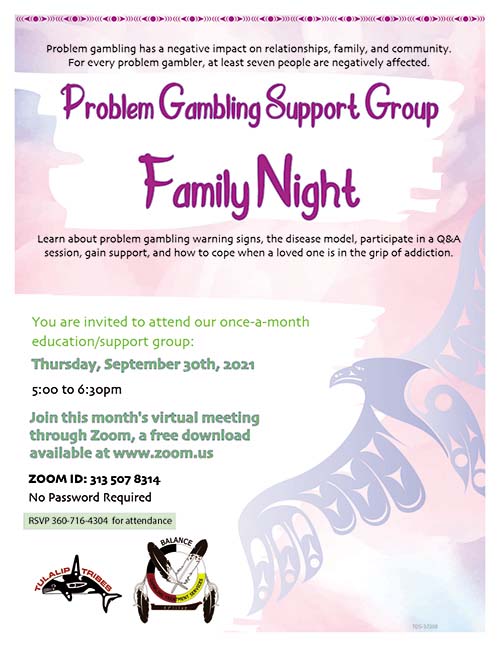
Donna Jean Houle
July 31, 1961 – August 27, 2021
It is with great sadness that we share the passing of our mom, grandma, wife, sister, friend; Donna Jean Houle (Bill). Donna was born July 31, 1961 in Bellingham WA to Joe and Geri Bill and went to be with the creator on August 27, 2021.
She was outgoing and athletic with a strong personality she always had a beautiful smile and a contagious laugh. She was a loving spouse, mother, grandmother, sister, aunt and friend to many she will truly be missed by all who knew her. In her younger years she lived in Lummi. She then went to graduate from Chemawa Indian school; later moved to Tulalip and attended Everett Community College,
Tulalip is also where she started her family, where her 3 children were born. As a family they lived both in North Dakota and Tulalip. She was always connected to the land, and taught her kids to pray to the land and water wherever their travels took them. Donna was a part of the Smokehouse and baptized in Catholic Faith. Growing up she loved to travel to play baseball, war canoe race, attend powwows. Donna also enjoyed listening to music, singing and dancing; cooking; Seahawks football (but was especially proud of her brother JB, & her grandson Theron’s skills). Donna carried a deep respect and honor for her culture. She carried cultural knowledge, songs and language in which shared with her children and grandchildren. She was the most proud mom and grandma and loved all her babies with all her heart.
She is survived by her husband Darrell Houle, their children Derek (Keisha), Domonique, Dylan (Tenika); grandchildren Demi, LaKayla, Derek (son), Jackson, Theron, Dylan Rose, Hunter and Kylo; Siblings Inez, Jolene, Brian and Kristy. She is reunited in heaven with her son Baby Boy Houle; parents Joe and Geri Bill; siblings Joe, Kathy and Mariam.
Services will be held Saturday September 4, 2021 at the Tulalip Gymnasium at 10:00 AM.
She will be laid to rest at Mission Beach Cemetery, Tulalip WA. Arrangements entrusted to Schaefer-Shipman Funeral Home.
